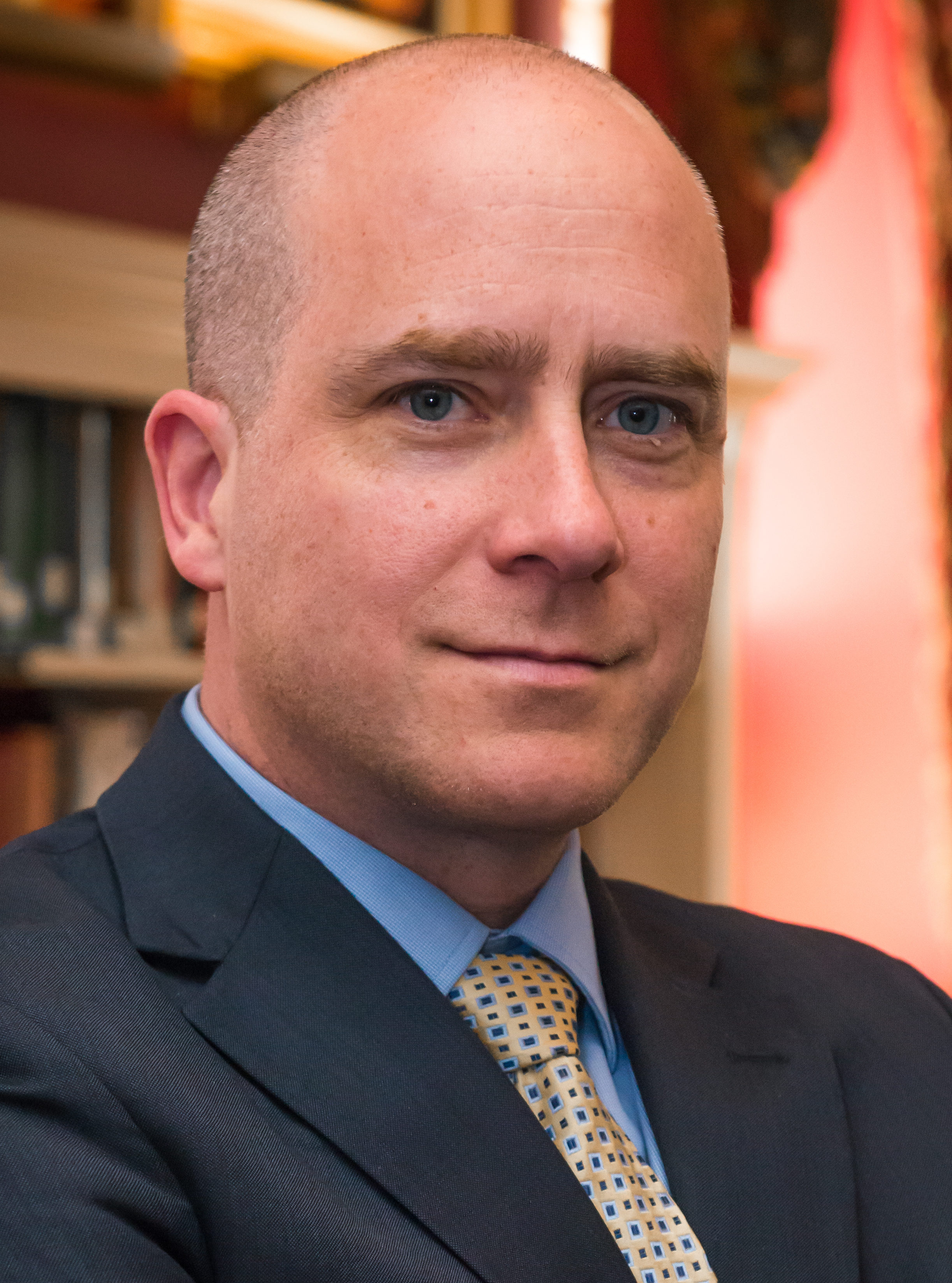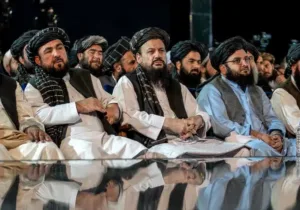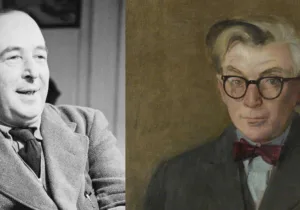They shall grow not old, as we that are left grow old:
Age shall not weary them, nor the years condemn.
At the going down of the sun and in the morning,
We will remember them.
Laurence Binyon, 1914
To get us where I want to go, a brief tour of three cemeteries will do the job. Each are found in the Normandy region of France and belong primarily to one or another of three of the major belligerents: Germany, Britain, and the United States. Comparisons of the three cemeteries reveal much about cultural remembrance, differing perceptions about the war and participation in it, the nature of dying for one’s country, and much else.
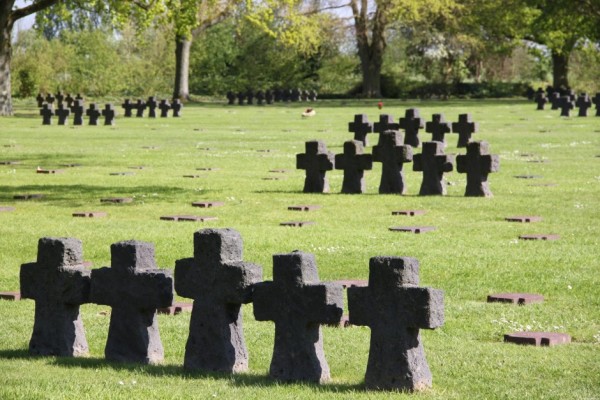
The German cemetery, La Cambe, located in close proximity to the landing beaches in the American sector of the invasion, is the resting place of just over 21,000 German soldiers. It is, I doubt surprisingly, the grimmest of the Normandy cemeteries. The headstones, flat on the ground, usually bear two names as most of the graves are shared. Each cluster of graves is marked by five upright Saxon crosses made of roughly cut, coarse, black rock. In the center of the cemetery is a tumulus ossuary —barrows or burial mound. Atop it, made of the same stone as the grave markers, is another, larger, Saxon cross and the statues of two mourning figures—a man and woman—brooding over the dead.
There is a carefully cultivated lack of anything at La Cambe that could be perceived as celebratory, martial or national pride, or admiration. This, too, is understandable. While the vast majority of the dead weren’t even out of their teens, and while many—one hopes most—would rather have been anywhere else in the world other than at war, it remains that the German cause for which they were fighting was manifestly unjust and they ought not to have been fighting for it. Of course, many in the cemetery fought for it because they believed deeply in it—such as the monstrous Adolf Diekmann, the SS-Sturmbannführer in charge of an SS battalion that, just after the Normandy landings, surrounded the French village of Oradour-sur-Glane, massacred very nearly all of its 650 or so inhabitants, and razed the village. The details of Diekmann’s atrocity were such that even his SS superiors opened an investigation into it.
The disposition of La Cambe registers these complexities. Owing, perhaps, to the recognition that sorting out the motives of the individual dead requires an omniscience that no human observer possesses, a plaque at the bottom of the tumulus acknowledges the ambiguity and places the burden of ultimate judgment where it rightly belongs. It reads:
Dunkel wolbt sich der Hugel uber dem Grab der Soldaten. Dunkel steht Gottes Gebot über den Toten des Krieges. Hell aber leuchtet der Himmel uber den ragenden Kreuzen. Heller noch leuchtet ihr Trost : Gott has das letzte Wort.
Dark is the mound that arches above the soldiers’ grave. Dark stands God’s commandment over the war dead. But bright are the heavens above the looming cross. Brighter yet shines their solace: God has the final word.

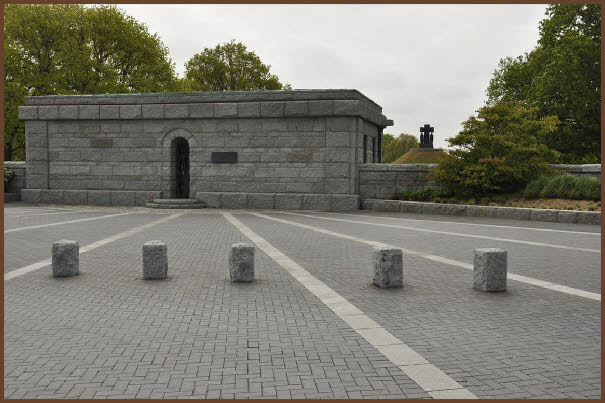
The inscription helps interpret the profound symbolism of the cemetery as a whole. Standing outside the gate of La Cambe, you ought to be struck by how narrow the doorway into it is. Its impracticality is so striking that it commands attention. Before passing through, if you look around, you’ll notice in the brick work surrounding the entrance a series of different colored stones that form lines radiating outward from the entry point. If the lines continued, they would range throughout the countryside. The lines are meant to suggest the ingress of the souls of the German dead coming in from throughout the Normandy battlefields. So, they don’t radiate out, they radiate in — a crush of the dead crowding gathering in about the doorway. Regarding that narrow doorway, one brochure posits that the constriction captures the idea that death is lonely, and that one passes into it without company. While this is true, it fails to capture the full scope of what’s being depicted. What it’s missing is grasped when you notice the door itself. Depicted on it are three circular images. The central image is of Christ. Above him are angels and below him appear to be the dead. Christ is seated. It’s pretty clearly a judgment seat as one of his arms points to the heavenly image above and the other down to the image of death below. The narrow doorway, then, can be coupled with the tumulus inscription to demonstrate that, more than merely death itself, it is judgment that is individual. God will not inquire what your nation did, but what you did.
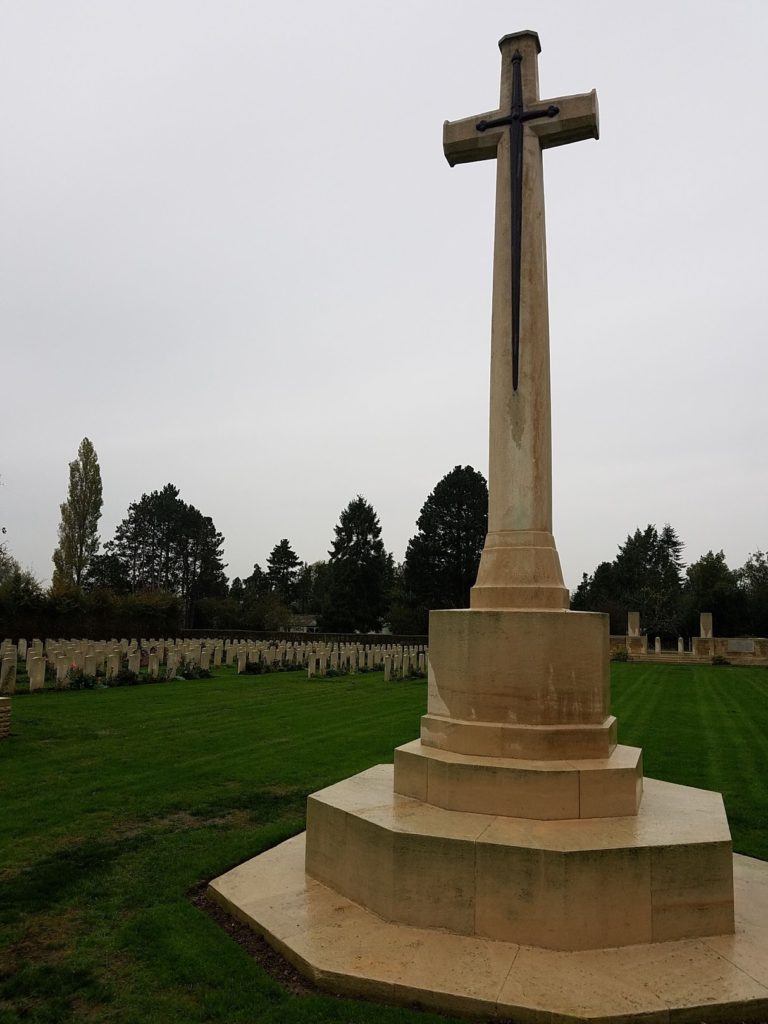
Moving on to the British cemetery at Tilly-sur-Seulles, we find the graves of nearly 1,000 Commonwealth soldiers, and, strikingly, 232 German dead. At the center of the cemetery, as at La Cambe, is a cross. Here, it is a Cross of Sacrifice, typical of Commonwealth cemeteries with more than 40 graves. Sharing characteristics of both Latin and Celtic crosses, the Cross of Sacrifice is usually of white stone typical to the given region. A stylized bronze sword, point down, is fixed to the front of the cross. Unlike the crosses at the German graves, it is not grim; though it is austere, even stark. Many have criticized the placement of a sword as glorifying or sacralizing war. Not so. The sword is meant to be both an offensive and, crucially, defensive weapon. It conveys, as well, the idea of chivalry, an ideal important to the British martial spirit. Warmongering is not in view.
Common to all military cemeteries, poignantly, are the graves of the fallen unknown. At both La Cambe and Tilly-sur-Seulles such graves are noted with a similarly simple inscription: “Ein Deutscher soldat” and “A Soldier of the 1939-1945 war known unto God” respectively.
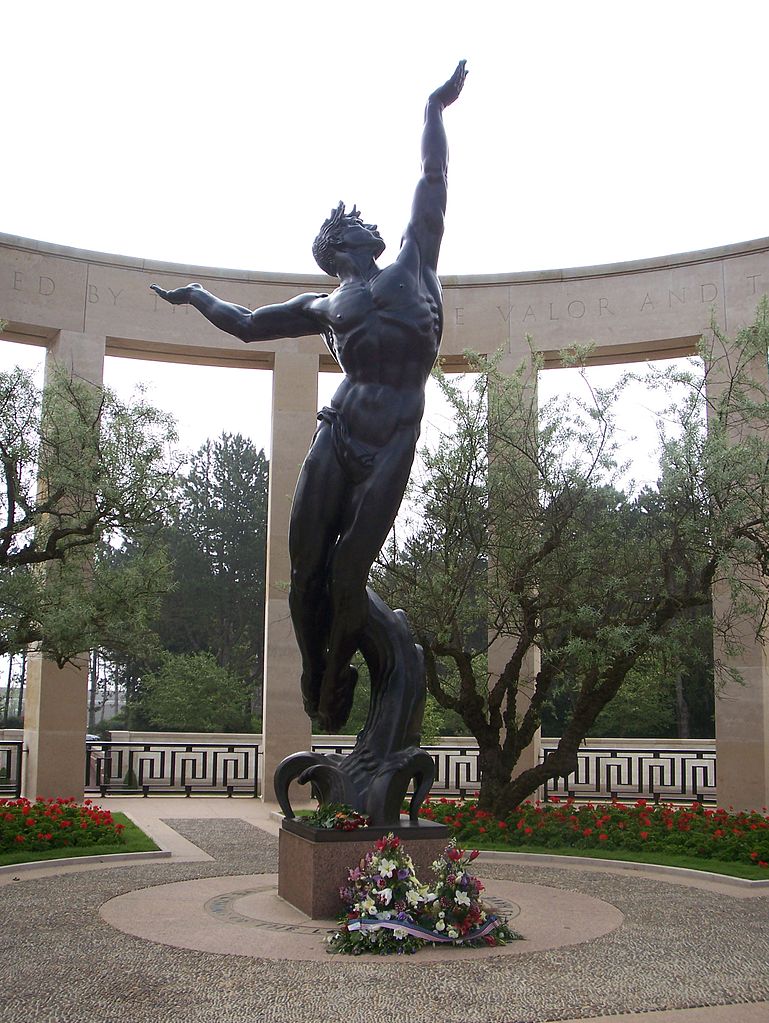
Contrast the German and Commonwealth graveyards with the American Cemetery at Normandy, located at Colleville-sur-Mer, a bluff high above Omaha beach, where so many of the dead fell as they charged across the surf and sand. There is a kind of exuberance here not found at the other locations. The inscription on the memorial crosses of the American unknown dead reads: “Here rests in honored glory a comrade in arms known but to God.” This theme of “honored glory” predominates throughout the cemetery, nowhere more strongly than in the central memorial, a semi-circular colonnade with a loggia at each end containing immense maps and narrative explanations of the US military operations. At the memorial’s heart is a 22-foot high bronze statue entitled The Spirit of American Youth Rising from the Waves, portraying a semi-naked and muscular young man whose cruciform depiction is clearly evocative of Calvary.
Not all Americans, however, shared this exuberance. Barely three weeks after the German surrender, on Memorial Day in 1945—it was still called Decoration Day back then—in another American military cemetery in Europe, this one at Anzio-Nettuno, a short drive outside Rome, Lt. General Lucian Truscott, Fifth Army commander, delivered the main address. However, as the frequently told story goes, he didn’t deliver his address to the assemblage of dignitaries and other attendees. Rather, he turned away from them and faced, instead, the sea of white wooden crosses that made up the temporary markers. The General’s losses were understandably still raw.
The G.I. cartoonist and journalist Bill Mauldin was present the memorial service, representing The Stars and Stripes newspaper, and he wrote movingly of Truscott’s speech.
When Truscott spoke, he turned away from the visitors and addressed himself to the corpses he had commanded there. It was the most moving gesture I ever saw. It came from a hard-boiled old man who was incapable of planned dramatics. The general’s remarks were brief and extemporaneous. He apologized to the dead men for their presence here. He said everybody tells leaders it is not their fault that men get killed in war, but that every leader knows in his heart this is not altogether true. He said he hoped anybody here through any mistake of his would forgive him, but he realized that was asking a hell of a lot under the circumstances….
Truscott said he would not speak of the glorious dead because he didn’t see much glory in getting killed in your late teens or early twenties. He promised that if in the future he ran into anybody, especially old men, who thought that death in battle was glorious, he would straighten them out. He said he thought it was the least he could do.
Truscott’s sentiment is to be well received. I have written occasionally about my Uncle Ed, a gunner in the Army Air Corps, 783rd Squadron, 55th Bomber Wing. He died just before Christmas in 1944, killed on takeoff over the airstrip in Pantanella, Italy when a device placed by an Italian saboteur detonated, wiping out the crew of my uncle’s B-24 Liberator. He was only 24 years old, but probably the oldest man in the plane. Truscott is right. There is nothing glorious in dying young. War is an abominable waste.
But, importantly, the glory attested to in the American Cemetery in Normandy is not attached to war itself, nor to dying in war per se, but to the cause for which the war was fought and the dying worth it. An engraving at the Cemetery’s chapel sums it up: “These [fallen] endured all and gave all that justice among nations might prevail and that mankind might enjoy freedom and inherit peace.”
Just war tradition, as readers of Providence should know, is a form of Christian thinking about the ethics of war. It posits that a war is just—or justified—when proportionate and discriminate force is required to protect the innocent, to take back things of sufficient value that have been wrongly taken, and to punish sufficiently grave evil when, in the last resort, nothing else will do so. The price of justice, as the Commonwealth and American cemeteries prove, is sometimes catastrophically steep. Nevertheless, it must sometimes be paid. When it must be, we owe it to our warfighters to never waste their lives, even while we willingly spend them.
Now, we often think of justice as something we bring a perpetrator of crimes to—in order to punish him, prevent him from doing further harm, deter others from doing the same, and, possibly, as a yearned-for bonus, to rehabilitate him. It’s true that we brought the Germans to justice in Normandy and the greater conflict. This is true and it is good. But this is also insufficient.
The primary emphasis of justice is on its non-punitive aspect, that is, justice is focused, first, on the vindication of victims. What does that mean? In the first sense, as Nigel Biggar writes, it means
recognising the injury as such, and thereby acknowledging the dignity of the direct victim. To suffer an injury and to have it ignored is to be told, effectively, “What happens to you doesn’t matter, because you don’t matter”. Therefore, to have it acknowledged is to have one’s dignity as an equal member of a human community affirmed.
Insisting on the same sentiment, an April 1865, New York Times essay debating the question of punishing Jefferson Davis and his fellow civil war conspirators, argues that “impunity to the guilty is cruelty to the innocent.”
From the Christian point of view, this should be familiar. The Hebraic tradition—as expressed in those scriptures we call the Old and the New Testaments—asserts that justice is that which ‘defends, restores, and promotes healthy community.” It is that which promotes shalom—that vision of comprehensive welfare extended in every direction that best represents all of creation—including all creatures—being that for which it was created to be. Accordingly, continues Biggar “the primary form of…justice is the rescue, deliverance, salvation, or vindication of the oppressed. The punishment of perpetrators is a secondary and subordinate moment in what is basically a reconstructive project.” In nuce, Biggar concludes, “the biblical concept of…justice is eudemonistic” Justice is concerned about human flourishing. This is to say that fighting can be the business of peacemaking.
The German cemetery in Normandy ought to be somber and to refer its dead to the judgment of the Judge of Nations because there ought never to have been German soldiers dying in Normandy in the first place. There ought never to have been German soldiers there at all. But, because there were, Normandy is seeded with American dead because America joined with her brave Allies to tell the innocent victims of Nazis malevolence that they were greatly esteemed, and unforgotten. The innocent needed to be protected and rescued, things taken needed to be restored to their rightful owners, an evil regime needed to be discredit, resisted, punished, and stopped; and its ability to do further evil destroyed. That American youths had to travel to foreign lands to do so is not glorious. Per Truscott, that many had to die in order to do so was not glorious. But, pace Truscott, that so many were willing to do so is, I assert, glorious indeed. Those who died can rest well knowing they were called to be their brothers’ keepers, and they were not found insufficient. Truscott, I trust, would agree.
Humility, of course, must always attend such undertakings. Whenever we fight just wars, we do so knowing that we are, ourselves, not entirely just. Nor do we fight just wars happy in the simple fact that we get to fight. Americans should be lethal fighters, but never eager ones. This does not mean our young ought not to march off to battle with happy hearts. When our cause is just, when we are surrounded by comrades-in-arm with whom we are proud to fight and unafraid to die, then happy hearts we ought to have — even as we remain cognizant of the tragedy and waste of even necessary war. Returning to the old New York Times piece, the author continued in his reflection on punishing the enemy:
No one wishes to see his execution. Few like to witness his end. Every right-hearted man would fain see justice reconciled with mercy to him here, if possible, and gladly finds the least ground for hope in sovereign mercy for him hereafter. But we are made the sad submissive ministers of a certain measure of justice here, with a fatal penalty upon ourselves if we neglect it. There are high reasons for this, but highest of all is the necessity of keeping the soul of society alive to the sense of justice, without which disorganization is sure.
To those dead, to those glorious dead, who died to vindicate the innocent, I stand in humble gratitude and with proud and profound sorrow. You are known to God, and never to be forgotten by the rest of us.
